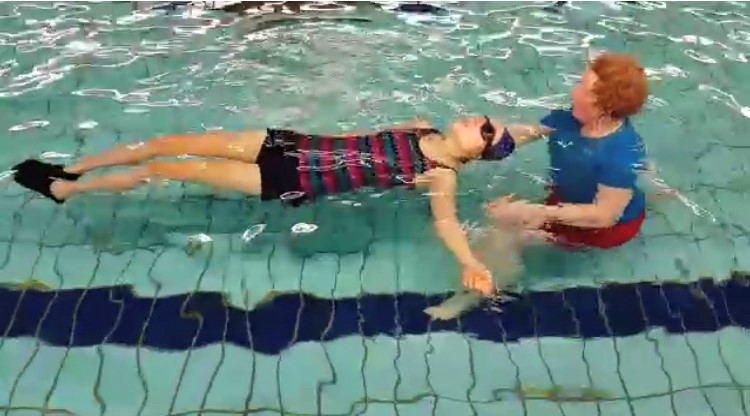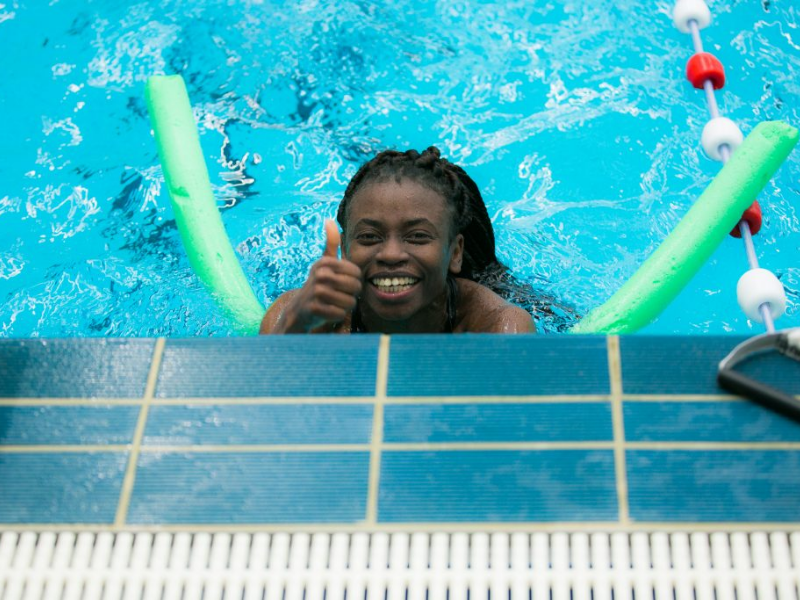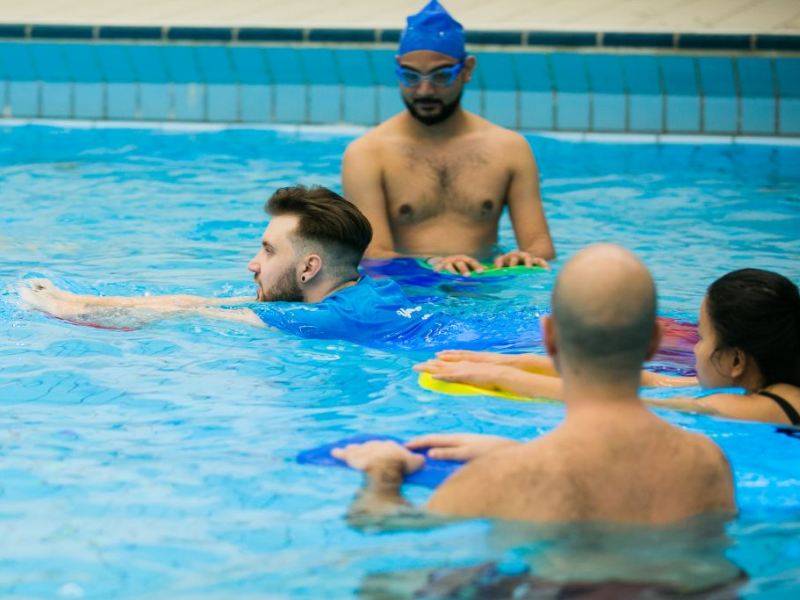Floating in swimming
The science of swimming
Is it true that a higher percentage of body fat helps you float better?
With very few exceptions, everyone floats, however most people think they are that exception when in reality 99,9% are not. It is the degree of flotation and how easy it is to float that is influenced by your body’s make-up.
Floating factors
People usually float to varying degrees and in varying ways. The degree of buoyancy is dependent upon several factors. In humans, the predominant constituent matters are bone:
- muscle, fat
- air in the lungs and other organs
- and fluids (e.g., blood).
The proportions of these factors in an individual’s physical make-up determine the specific gravity, the ability to float, and the characteristics of floating. There is considerable variation in these factors among individuals.
Fat to muscle tissue ratio
Generally speaking, the elderly, women, and persons who are not physically fit have a tendency to float better because they have a higher fat to muscle tissue ratio even if they are very slim. Also, fully inflated lungs will enhance buoyancy tremendously.
Fat has a specific gravity of less than 1.0 and floats in water, while both bone and muscle have a specific gravity of slightly more than 1.0.

“Thus, people with a high proportion of fat will float better, while some individuals with very low fat levels, heavy bones, and high muscle mass will tend to float less well. The best way to ensure that you can float in water is to take swimming lessons, where you will learn the techniques required to stay above water in all situations and without stress.”
Related questions
Do people float better in salt water in the sea, or fresh water in the swimming pool?
You will find it easier to float in the sea (saltwater.) The reason for this is that sea water is denser than fresh water. The salt combines with the water molecules, giving sea water more matter per cubic inch than fresh water when the same volume of water is compared. Therefore, your body will float more easily in the sea.
More about the science of Flotation
Basic Physics of Flotation
The buoyant force from water and the pull of gravity determines how an individual floats. It varies considerably between swimmers. It requires technique adjustments because it interacts with any movement principle.
When an object floats in a dense fluid, it is acted upon by two forces. One is the ever-present force due to gravity and the other is the buoyant force, the force exerted by the fluid on the object. When the object is symmetrical, such as a rectangular block of Styrofoam, the two forces coincide. When the object floats, the buoyant force equals the gravitational force. Since the floating object displaces its weight in fluid (Archimedes’ Principle), equilibrium is reached and the Styrofoam block rests at the surface in the fluid. The water “supports” the weight of the object. Confusion often reigns between the roles of the volume and the weight of the water displaced. Archimedes’ Principle is appropriate to understand what occurs. It commonly is stated as follows: When a body is immersed in a fluid, it experiences an upward buoyant force equal to the weight of the fluid displaced.
The role of weight
Weight is the common measure of the gravitational force. When the volume and weight of water displaced are equal to the volume and weight of the object, the object does not float or sink. The state of “neutral buoyancy” is achieved. This is useful for activities such as scuba diving, where a buoyancy compensator is used to produce neutral buoyancy. If the effects of that device were not used, a diver would be fighting constantly against sinking or rising in the water resulting in the unnecessary expenditure of energy and air supply.
The role of volume
When the volume of an object is greater than the volume of the fluid displaced, some of the object will show above the fluid surface. Specific gravity (in water) is the useful measure of the capacity to float. It is the fraction: the weight of the object divided by the weight of an equal volume of water. For example, if a 99 kg person displaces 100 kg of water when fully immersed, the specific gravity of the individual would be .99 (99/100). The volume of the person above the surface would weigh 1 kg. Because of varying densities within the human body, it is not possible to determine the percent of volume of the swimmer that would float out of the water.
(Source: Swimming science Bulletin ’07. Brent S. Rushall, Ph.D.)
Learn how to float
How an individual floats is determined by the buoyant force from water and the pull of gravity. This article explains floating from a physics point of view.
Overcome fear of water
Over the last 6 years, Your Personal Swim Coach has helped people who had to deal with a severe fear of water daily. But what exactly is Aquaphobia and how do we deal with it?
Our adult swim classes
Your Personal Swim Coach will help you become a more confident you, a stronger, fitter and healthier you, a happier, care-free you and ensure your success in learning to enjoy and feel safe in and around water!
Water Intro
Are you unable to swim, scared or challenged? Have you taken lessons before and failed? Or it has been a long time ago?
Stroke Introduction
You are comfortable in shallow water but are not able yet to perform all 4 basic strokes. This level requires you to have passed the introduction program, or you are able to perform a swim a backcrawl, and a single backstroke (froggy leg).
Sport class
Take Your Swimming to the Next Level with Our Sport Class!
For those who have earned their official swim diplomas or advanced swimmers looking for new challenges—our Sport Class is designed for you!



